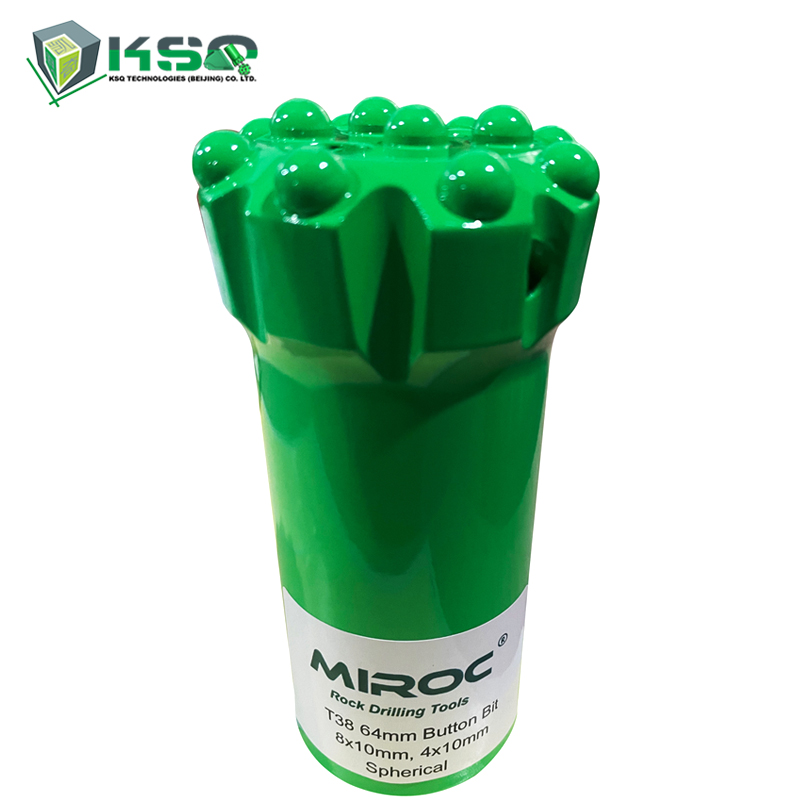Thread button drill bits are a type of rock drilling tool used primarily in mining and construction. They are characterized by their threaded connections and button-shaped cutting surfaces. These bits are engineered to provide optimal performance in drilling operations by delivering a combination of strength, durability, and precision.
Thread button drill bits are typically made from high-quality steel and tungsten carbide. The steel body provides the necessary strength to withstand the immense pressure during drilling, while the tungsten carbide buttons offer exceptional hardness to cut through rock efficiently. The combination of these materials ensures that the bits can endure the harsh conditions of drilling and maintain their cutting edge over time.

There are several types of thread button drill bits, each designed for specific applications:
Tapered Button Bits: These are used in softer rock formations and are ideal for short-hole drilling. Their tapered design allows for easy removal and replacement.
Threaded Button Bits: Suitable for harder rock formations, these bits have a threaded connection that ensures a secure fit with the drill rod.
DTH (Down-The-Hole) Button Bits: These bits are used in deep hole drilling and are attached directly to the hammer, providing a more efficient drilling process.
RC (Reverse Circulation) Button Bits: Designed for exploratory drilling, these bits enable the collection of rock samples during the drilling process.
Thread button drill bits are versatile tools used in various industries, including mining, construction, and geotechnical engineering. Their primary applications include:
In mining, thread button drill bits are used to drill blast holes, exploration holes, and other types of drilling required to extract minerals. Their ability to penetrate hard rock formations makes them essential in both surface and underground mining operations.
In the construction industry, these drill bits are used for foundation drilling, tunneling, and other infrastructure projects. They ensure precise and efficient drilling, which is critical for the stability and integrity of construction projects.
Geotechnical engineers use thread button drill bits to collect soil and rock samples for analysis. This data is crucial for assessing the suitability of a site for construction, mining, or other projects.
Choosing the right thread button drill bit for your project involves considering several factors:
The hardness of the rock formation you are drilling into is a key factor in selecting the appropriate bit. Harder rocks require bits with stronger and more durable materials, such as tungsten carbide buttons.
The depth of the hole you need to drill will also influence your choice. For deeper holes, DTH button bits are more suitable due to their efficiency in transmitting energy to the drill bit.
The diameter of the hole you need to drill will determine the size of the drill bit. Ensure that the bit you choose matches the specifications of your drilling equipment and the requirements of your project.
The speed at which you need to complete the drilling project can also impact your choice. Some bits are designed for faster drilling speeds, which can be beneficial in time-sensitive projects.
While high-quality drill bits can be more expensive, they often provide better performance and longevity. Consider the overall cost-effectiveness of the bit, including its lifespan and the efficiency it offers.
Proper maintenance and care of thread button drill bits are essential to maximize their lifespan and performance. Here are some tips to ensure your drill bits remain in optimal condition:
Regularly inspect your drill bits for signs of wear and damage. Look for cracks, chips, or excessive wear on the buttons and body of the bit. Early detection of issues can prevent more significant problems and extend the life of the bit.
After each use, clean the drill bits thoroughly to remove any debris or rock fragments. This prevents buildup that can affect the bit’s performance and longevity.
Store drill bits in a dry, cool place to prevent rust and corrosion. Use protective covers to shield the buttons and threads from damage during storage.
If the buttons on your drill bit become dull, consider having them professionally sharpened or resurfaced. This can restore their cutting efficiency and prolong the bit’s usability.
The technology behind thread button drill bits is continually evolving, with new advancements aimed at improving efficiency, durability, and precision. Some of the latest developments include:
Researchers are developing new materials and composites to enhance the strength and wear resistance of drill bits. These advancements aim to extend the lifespan of the bits and improve their performance in challenging conditions.
Innovative design changes, such as improved button shapes and optimized thread patterns, are being introduced to increase drilling efficiency and reduce wear. These designs help in achieving faster drilling speeds and better hole accuracy.
The integration of automated drilling systems with thread button drill bits is revolutionizing the industry. These systems offer precise control over drilling operations, reducing human error and increasing overall productivity.
Thread button drill bits are indispensable tools in the mining, construction, and geotechnical engineering industries. Their ability to penetrate hard rock formations with precision and efficiency makes them essential for a wide range of applications. By understanding the different types of drill bits, their applications, and how to select and maintain them, you can ensure optimal performance and longevity for your drilling projects.
Comments
Please Join Us to post.
0